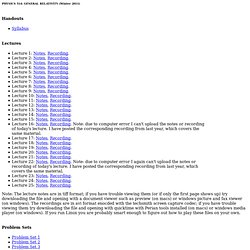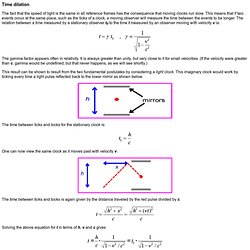

E= mc^2. Back to main course page John D.

Norton Department of History and Philosophy of Science University of Pittsburgh Einstein's famous equation has grown into one of the great symbols of the 20th century. It is the one equation in science that people recognize, if any is. It has a kind of iconic status and dual connotations: the brilliance and insight of Einstein and the darkness of atomic bombs.
Kinematics and Dynamics So far we have looked at kinematics, the study of motions in space and time, and we have seen how Einstein's special theory of relativity has affected it. We now look at dynamics, the study of the causes that affect motion, where those causes are forces. In kinematics, special relativity changes our normal expectations. The Basic Concepts of Dynamics: Two Relations Classical physics and special relativity agree in the following framework of basic concepts. Energy: I know of no useful definition for energy. Momentum = mass x velocity for a mass moving at the nominated velocity. Physics 514: General Relativity. PHYSICS 514: GENERAL RELATIVITY (Winter 2011) Handouts Syllabus Lectures Lecture 1: Notes, Recording.

Lecture 2: Notes, Recording. Note: The lecture notes are in tiff format; if you have trouble viewing them (or if only the first page shows up) try downloading the file and opening with a document viewer such as preview (on macs) or windows picture and fax viewer (on windows). Problem Sets Useful Resources. Time dilation. Time dilation The fact that the speed of light is the same in all reference frames has the consequence that moving clocks run slow.

This means that if two events occur at the same place, such as the ticks of a clock, a moving observer will measure the time between the events to be longer. The relation between a time measured by a stationary observer t0 to the time t measured by an observer moving with velocity v is: The gamma factor appears often in relativity. It is always greater than unity, but very close to it for small velocities. This result can be shown to result from the two fundamental postulates by considering a light clock.
The time between ticks and tocks for the stationary clock is: One can now view the same clock as it moves past with velocity v. The time between ticks and tocks is again given by the distance traveled by the red pulse divided by c. Solving the above equation for t in terms of h, v and c gives Relativity index examples Lecture index. Einstein's Most Famous Thought Experiment. John D. Norton Department of History and Philosophy of Science University of Pittsburgh, Pittsburgh PA 15260 Homepage: www.pitt.edu/~jdnorton This page (with animated figures) is available at www.pitt.edu/~jdnorton/goodies Einstein recalled how, at the age of 16, he imagined chasing after a beam of light and that the thought experiment had played a memorable role in his development of special relativity.
Famous as it is, it has proven difficult to understand just how the thought experiment delivers its results. It fails to generate serious problems for an ether based electrodynamics. I propose a new way to read it that fits it nicely into the stages of Einstein's discovery of special relativity. For more details, see: "Chasing the Light: Einstein's Most Famous Thought Experiment," prepared for Thought Experiments in Philosophy, Science and the Arts, eds., James Robert Brown, Mélanie Frappier and Letitia Meynell, Routledge. 1. The thought is simplicity itself. 2.